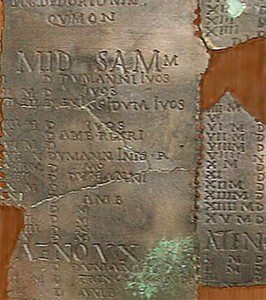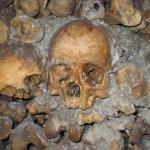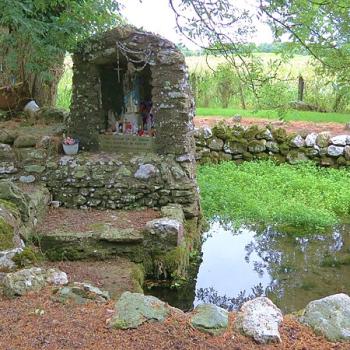A Cosmology of Dark and Light
The central concept behind Celtic cosmology was the manner in which they conceptualized the division of the universe. To the Celts, all of time and space could be divided into two polar forces. These could be conceptualized as darkness and light, night and day, chaos and order, among others. It was their belief that all of reality resulted from the interaction between these two forces [2]. That as grim as the “forces of darkness” may sound (chaos, death, night, winter), the “forces of light” and reality itself would be unable to exist without them.

Existence itself was conceived as a series of cycles, beginning with the “dark” period and moving into the “light” period, before turning back to the “dark” and repeating ad infinitum. This ordering of dark before light was derived from the belief that all growth takes place in darkness. For instance: seeds grow underground until they can spring from the soil, and human children gestate inside their mothers’ wombs before coming out whole [2]. So the beginning of the cycle was the “dark” part, where subconscious growth with limitless potential would occur, with that potential manifesting during the “light” part. It then only makes sense that the Celtic “day” began at sunset, and was measured by “nights”, as Julius Caesar described during his campaign against the Celts in Gaul (modern-day France) [7]:
…they compute the divisions of every season, not by the number of days, but of nights; they keep birthdays and the beginnings of months and years in such an order that the day follows the night.
The Three Nights of the End of Summer
One of the few written records handed to us by the Pagan Celts is a calendar discovered in France in 1897, popularly known as the Coligny Calendar [2][6]. This calendar was created in the early days of the Roman occupation in Gaul, and attempted to harmonize the native agrarian calendar with the solar one used by colonial Rome. It describes a calendar year that was (unsurprisingly) divided in two, with the first half beginning with a month called Samon- and the second half beginning with a month called Giamon-. Samon- and Giamon- are related to words in surviving Celtic languages that mean “summer” and “winter”, respectively.

The beginning of the calendar year was marked by a three-night long celebration listed as Trinouxtion Samonii, which could be translated as “The Three Nights of the End of Summer” [2]. This was a period between summer, the “light” part of the year, and winter, the “dark” part of the year. In Ireland, Samhain belonged to neither summer nor winter [3][4], and thus was treated as a period outside of time [8]. As a result, cosmological order was thought to break down for the duration of the festival. The Otherworld, which was normally hidden to human eyes, became visible and bled into the temporal world [3]. We can surmise from folk traditions and mythology that it would have been considered possible to catch glimpses of the future through divination, that the dead would return to visit the living, that unwary travellers could slip into the Otherworld and never return, and that ferocious Otherworld monsters could attack royal strongholds with flame or poison [2][4]. As a result of this collapse of cosmological order, the norms of society itself would also be upended. If Scottish tradition is any indication, property would be vandalized, gender norms could be broken, and young men would go around dressed in disguises [6].
After this three-day (or to the Celts, three-night) period of chaos came the re-creation of the orderly world. It would gestate in darkness for the next six months before shifting into the “light” at Beltane. This would last for an additional six months, only to dissolve at the next Samhain [6].

















